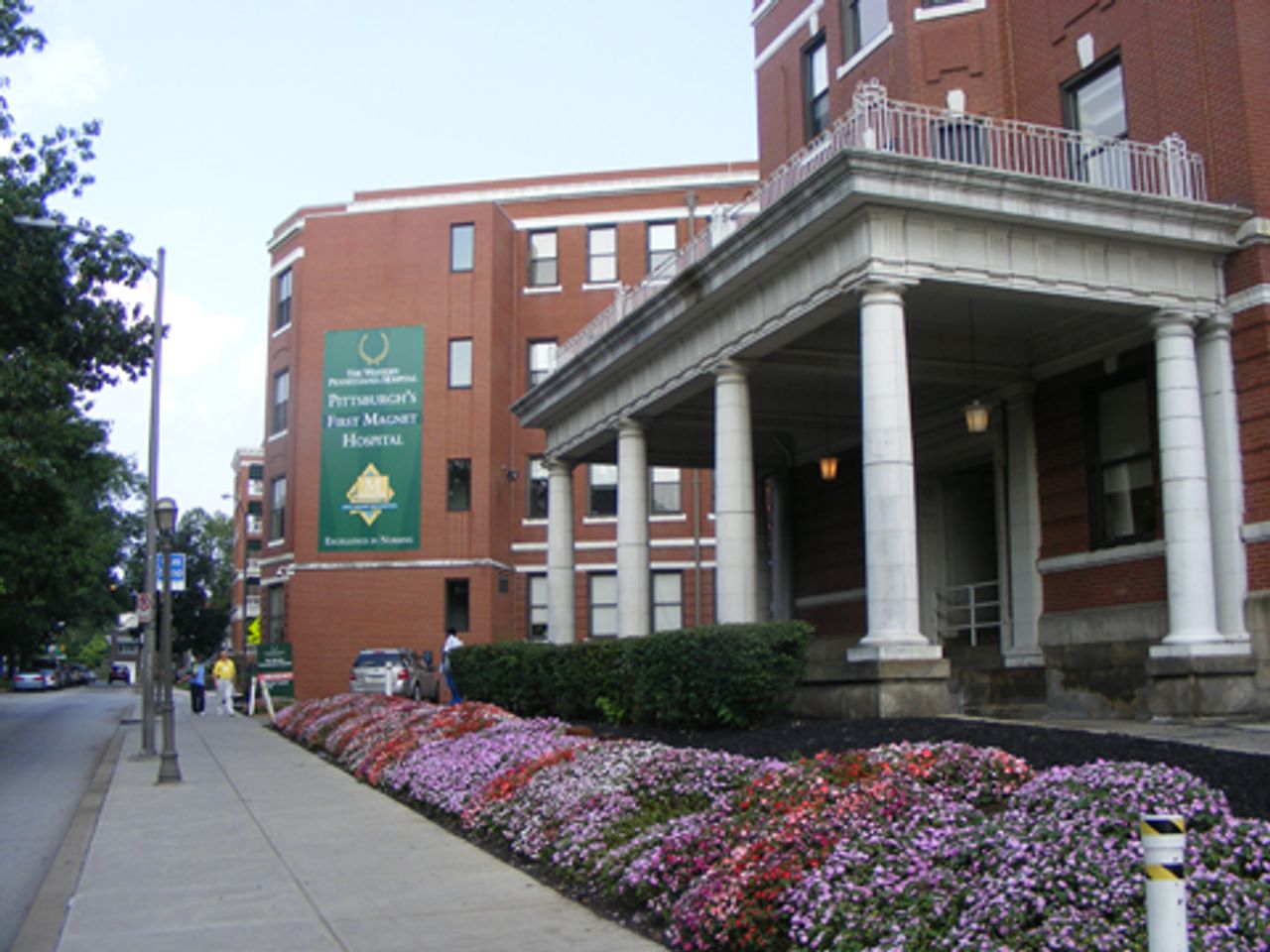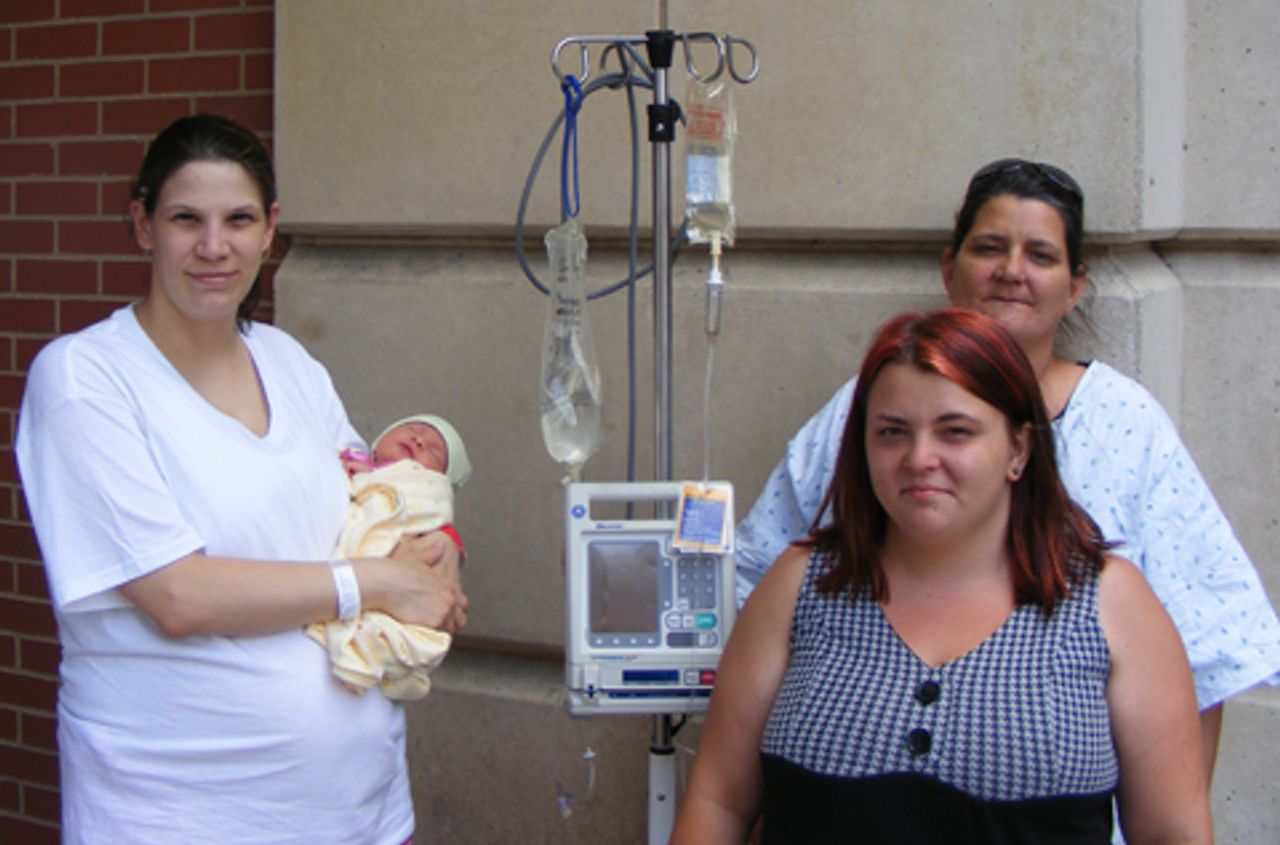West Penn Allegheny Health Systems (WPAHS) announced in June the layoff of 1,500 doctors, nurses, aides and other staff at its 98-year-old flagship West Penn Hospital in Pittsburgh’s Bloomfield neighborhood.
 West Penn Hospital, where 1500 workers will lose their jobs by January
West Penn Hospital, where 1500 workers will lose their jobs by JanuaryThe layoffs are expected to take place by January 1, as most of the inpatient and emergency room services are closed. According to hospital officials, critical care, oncology, neurosciences, orthopedics and cardiovascular care will also close by January.
The women’s and infants’ center, the burn unit, bariatric surgery and inpatient rehabilitation will remain at the hospital. The hospital will lose over 303 of its 505 beds. Currently some 2,400 people work at the facility.
WPAHS said that the layoffs and closure of services were necessary to offset $80 million in losses sustained by the health system in the past two years, although the hospital’s finances improved in the last quarter. The job cuts were announced a few days after both Moody’s Investors Services and Standard & Poor’s announced a downgrading of the health system’s bond ratings.
“This is terrible, this is bad for the people who work here, this is bad for the community,” a secretary at the hospital, who asked that her name not be used, told the WSWS. “I worked at St. Francis, when it was closed eight years ago. This is much worse. There aren’t any jobs around now.”
Workers were informed of the layoffs, not in person, but in a video broadcast by WPAHS President and CEO Dr. Christopher Olivia played over employees’ computer terminals.
“I didn’t like how we were told. We just watched it on the computers. It seems the media found out about it before we did,” explained the secretary.
Katie, a physical therapist, expressed concern that nurses would have difficulty finding work. “Nurses are going to have a hard time. There are not many jobs for nurses in Pittsburgh.”
Two housekeepers at WPAHS, who also asked that their names not be used, expressed their outrage to the WSWS at what was happening.
“We could walk into work tomorrow and they could tell us to turn around and walk out,” said one of them, who had worked at the hospital for three years. “With the ER closing, what are people who live nearby going to do? Some people will die before they reach Oakland or the north side.”
This worker’s anxiety was exacerbated by management’s lack of communication. Officials did not announce who would be losing their jobs. Her friend, who had worked at the hospital for 11 years, explained, “They also made the comment that 3,000 people would be losing work. The number 1,500 was announced by management in the article you provided me, but I wonder if the figure 3,000 represents another 1,500 part-time positions, or something else that the management chose simply not to report.”
“No one in the housekeeping department is safe from potential layoff,” she continued. “The hospital makes extensive use of contracting out. The contract workers are better paid and their work is below standard in comparison to regular employees.”
Roger, who has worked at the hospital for eight years, told our reporters, “This is not good. This hospital has been in the community for 100 years. People depend upon it. There are a lot of people who are elderly and don’t have cars. It will not be easy for them to go to Oakland or the north side.”
 Patients visit outside the hospital; ER and most inpatient care will end by January
Patients visit outside the hospital; ER and most inpatient care will end by JanuaryKaren and her daughter Teresa pointed out that most of the other hospitals are owned by UPMC, the area’s largest health system, and that they do not take the same insurance. “I have been here three days and they haven’t even asked how I am paying for this. If I were at UPMC, they would want me to fill out an emergency Medicaid request before I got though the door.
“This is a good hospital. I have been coming here all my life. My daughter was born here. The people are good, they treat you good.”
Her daughter Teresa agreed. “West Penn takes all insurances, there are many that UPMC won’t take. What are people going to do if their insurance doesn’t cover UPMC hospitals?”
Maria, who had her baby at the hospital only five days before, agreed about West Penn. “The people here are real good. They treat you like you are a person and make you feel at home. So many people work here and people in the community depend upon it. The people that work here depend upon the jobs, they have bills and families just like the rest of us.”
West Penn Allegheny Health Systems was formed 10 years ago, when West Penn Hospital bought the parent company of Allegheny General Hospital, which was bankrupt. It is the Pittsburgh region’s second largest hospital network, behind the much larger and dominant UPMC.
WPAHS already cut 213 jobs at the hospital this past January. Last month officials announced that 350 workers at WPAHS’s Suburban General Hospital in Bellevue would lose their jobs in August when they close all inpatient care and surgical services, transforming the hospital to a strictly outpatient facility.
Local Democratic Party politicians have made clear that they will do nothing to try and prevent the shutdown. Pittsburgh Mayor Luke Ravenstahl and Allegheny County Executive Dan Onorato, both Democrats, have only stated that they will ask the state to provide $500,000 to help with job placement services for the laid-off workers. Onorato is currently running on the Democratic ticket for governor.
State Senator Jim Ferlo, whose district includes the hospital, said the news was “obviously devastating for the employees who will lose their jobs,” but said that the hospital could not continue to operate while sustaining a loss.
Underlying the layoffs at West Penn is the reorganization of health care due to the expected cuts in Medicare and Medicaid payments that are part of the Obama administration’s health care reform.
Under the administration’s overhaul of the health care system, approved by Congress, deep cuts will occur in reimbursements to doctors and hospitals for services paid under the Medicare and Medicaid programs.
A survey of the 29 hospitals that serve the Southwestern Pennsylvanian region shows that all but six received at least half of their net patient revenue from Medicare and Medicaid in 2009. Unsurprisingly, hospitals in urban and rural areas with higher numbers of elderly and poor tend to have the highest percentage of income coming from Medicare and Medicaid.
West Penn Hospital received 41.2 percent of its net patient revenue from Medicare and 12.2 percent from Medicaid. Health systems are seeking to reduce the number of beds in areas with high numbers of elderly and poor patients, while shifting to more outpatient care where reimbursement rates are higher compared to costs.
Last January, UPMC closed its hospital in Braddock, Pennsylvania, laying off 900. The 100-year-old hospital was in one of the poorest communities in the Pittsburgh region and much of its revenue came from individuals on Medicare and Medicaid.
UPMC’s McKeesport hospital, in another of the region’s poorest communities along the Monongahela river, which has never recovered from the steel mill closures in the 1980s, receives more than 70 percent of its revenue from people on Medicare and Medicaid. Many fear that it also is on the chopping block.
